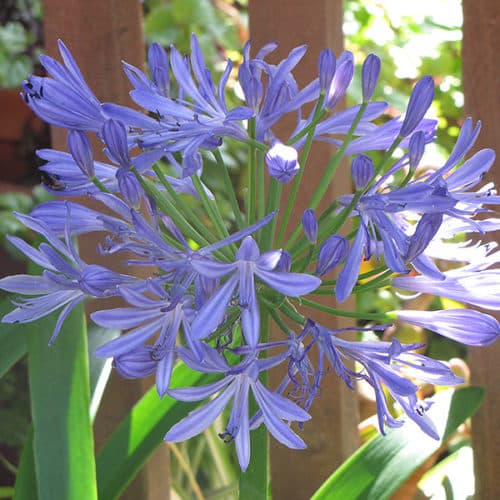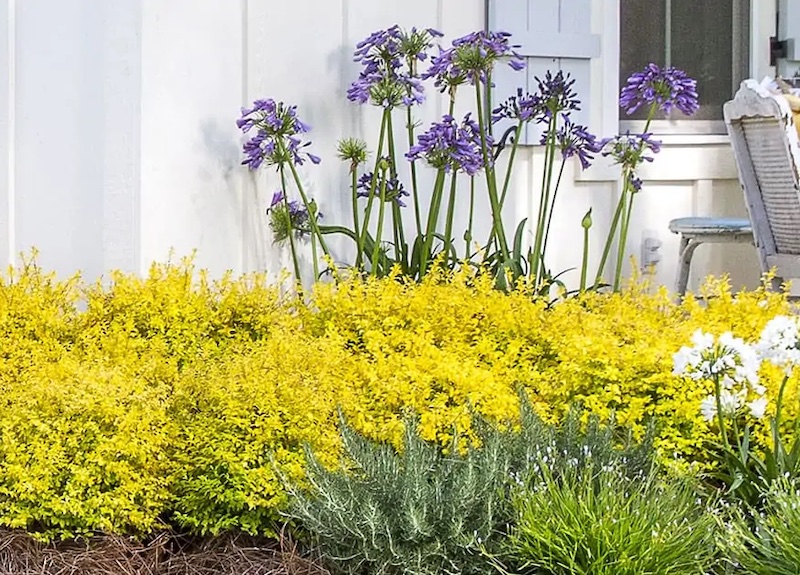Agapanthus Treatment Tips for Lush and Vibrant Flowers
Agapanthus Treatment Tips for Lush and Vibrant Flowers
Blog Article
Understanding the Art of Agapanthus Care: Essential Steps for Healthy And Balanced Development and Dynamic Flowers
In the realm of cultivation, the growing of agapanthus stands as a satisfying venture for those who look for to nurture these elegant blooming plants. From choosing the right selection to grasping pruning strategies, the journey in the direction of cultivating growing agapanthus plants is diverse and holds the essential to opening the full possibility of these organic gems.

Choosing the Right Agapanthus Selection

When choosing the appropriate Agapanthus selection for your yard, think about variables such as climate suitability, bloom color, and growth habit. Agapanthus, typically understood as Lily of the Nile or African lily, is available in a variety of shades ranging from tones of purple and blue to white. Pick a flower shade that complements your existing yard combination to create a harmonious landscape. Furthermore, think about the environment in your region to guarantee the Agapanthus range you pick can grow in your particular conditions. Some ranges are more forgiving of cool temperature levels, while others favor warmer climates. Comprehending the growth routine of different Agapanthus selections is essential for appropriate placement within your yard. Some ranges have a clumping development practice, suitable for borders or containers, while others have a more dispersing nature, ideal for ground cover or mass growings. By meticulously examining these aspects, you can choose the perfect Agapanthus selection to improve the beauty of your yard.
Ideal Growing Conditions
Taking into consideration the optimal ecological requirements is vital for successful Agapanthus farming. Agapanthus plants are sensitive to chilly temperature levels and should be protected from frost throughout winter months.
To make certain healthy development and vibrant flowers, plant Agapanthus light bulbs at a deepness of about 2-4 inches and area them 8-12 inches apart. Including raw material, such as garden compost, to the dirt can improve drainage and fertility, promoting durable root advancement. Mulching around the base of the plants assists maintain wetness and suppresses weed development. Normal watering is vital, particularly during the expanding period, to maintain the soil constantly wet but not soaked.
Watering and Feeding Tips
Preserving proper dampness degrees and giving necessary nutrients are vital components in the treatment regimen for Agapanthus plants. When it comes to watering Agapanthus, it is crucial to strike a balance. These plants favor consistently damp soil but are at risk to root rot if overwatered.
Feeding Agapanthus is important for promoting healthy and balanced growth and prolific blossoms. Apply a balanced plant food, such as a 10-10-10 formula, in the early springtime as new growth emerges. By following these watering and feeding ideas, you can ensure your Agapanthus plants grow and produce lively, durable blossoms.
Pruning Methods for Agapanthus
Trimming Agapanthus plants at the ideal times and with correct techniques is vital for maintaining their health and advertising optimum development and flowering. The ideal time to prune Agapanthus remains in late winter or go to the website early spring before brand-new growth arises. Beginning by removing any yellowing or dead fallen leaves near the base of the plant. Cut them as short as feasible without damaging the emerging shoots.
Deadheading spent blossoms can additionally redirect the plant's power right into creating more flowers instead than establishing seeds. If you want to accumulate seeds for breeding, leave some blossoms to mature and completely dry on the plant.
Remember to use tidy, sharp devices to make exact cuts and reduce the threat of introducing diseases. Agapanthus. Routine trimming will certainly help keep your Agapanthus looking healthy and try this web-site balanced and cool while making sure a bountiful screen of attractive blossoms
Handling Usual Bugs and Illness
After guaranteeing correct pruning strategies for Agapanthus, it is necessary to resolve usual insects and illness that can influence the health and vitality of these plants. Agapanthus plants are typically sturdy but can still succumb to specific concerns. One usual bug that influences Agapanthus is the Agapanthus gall midget. This little, orange fly lays its eggs in the foliage, resulting in altered development and blossom buds that fall short to open up. To combat this insect, trim and damage any type of afflicted plant parts and take into consideration making use of insecticidal soap.
Additionally, Agapanthus plants can endure from origin rot if they are planted in inadequately draining pipes soil. By being cautious and taking prompt action against conditions and parasites, you can assist your Agapanthus plants prosper and create dynamic blooms. Agapanthus.

Verdict
Finally, understanding the art of agapanthus treatment entails picking the appropriate range, supplying perfect growing problems, proper watering and fertilizing, appropriate trimming methods, and dealing with usual bugs and conditions. By complying with these crucial steps, you can make sure healthy growth and lively blossoms for your agapanthus plants. Keep in mind to regularly keep track of and keep your plants to promote read review their total well-being and longevity.
To guarantee healthy growth and vivid blooms, plant Agapanthus bulbs at a depth of regarding 2-4 inches and room them 8-12 inches apart. By adhering to these watering and feeding ideas, you can ensure your Agapanthus plants prosper and generate vibrant, durable blossoms.
One usual insect that influences Agapanthus is the Agapanthus gall midge. Additionally, Agapanthus plants can experience from root rot if they are planted in badly draining soil. By complying with these vital steps, you can ensure healthy growth and dynamic blossoms for your agapanthus plants.
Report this page